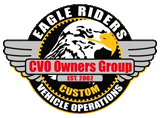continued from above:
(6) Personnel who operate privately owned ATVs or motorcycles off–road should complete appropriate operator
safety training.
c. Motorcycle vehicle equipment.
(1) When operated on any DOD installation, in both on– and off–road modes, all Government–owned or privately
owned motorcycles, mopeds, motor scooters, and ATVs (when equipped) must have headlights turned on at all times,
except where prohibited by military mission, the SOFAs, or local laws.
(2) Motorcycles shall be equipped with both a left–hand and right–hand rear view mirror mounted on the handlebar
or fairing. (Note that Government–owned off–road motorcycles on tactical missions or training are exempt from this
requirement.)
d. Motorcycle personal protective equipment. The following PPE is mandatory for the following personnel while
operating or riding as a passenger on a motorcycle, moped, or ATV: all Army military personnel at any time, on or off
a DOD installation; all Army civilian personnel in a duty status, on or off a DOD installation; all personnel in or on a
DOD–owned motorcycle; and all persons at any time on an Army installation.
(1) Helmets, certified to meet DOT standards, must be properly fastened under the chin. Outside CONUS riders may
wear HN helmets if the helmet meets or exceeds U.S. DOT standards.
(2) Impact or shatter resistant goggles, wraparound glasses, or fullface shield properly attached to the helmet must
meet or exceed ANSI Safety Code Z87.1, for impact and shatter resistance. A windshield alone is not proper eye
protection.
(3) Sturdy footwear, leather boots or over the ankle shoes must be worn.
(4) A long sleeved shirt or jacket, long trousers, and full fingered gloves or mittens designed for use on a
motorcycle must be worn.
(5) For on–road operations, a brightly colored, outer upper garment during the day and a reflective upper garment
during the night. Military uniforms do not meet this criterion. The outer garment shall be clearly visible and not
covered. Items may be worn on top of the outer garment, but they must meet the same visibility requirements of the
outer upper garment.
(6) During off-road operations, operators and riders must use additional PPE, such as knee and shin guards and
padded full fingered gloves.
(7) Installation commanders will ensure motorcycle operators, when entering the installation, are properly licensed,
have successfully completed a motorcycle rider course, and are wearing the required personal motorcycle safety
equipment.
e. Tactical motorcycle and all–terrain vehicle operations.
(1) For tactical motorcycle operations, the wearing of PPE will be based on the commander’s composite risk
assessment of mission requirements.
(2) Prior to tactical motorcycle and ATV operations, operators will be trained on the tactical operations and on the
controls that have been implemented to mitigate hazards. Curriculum and proficiency training for tactical motorcycles
and Government furnished (tactical and non–tactical) ATVs will be tailored to satisfy specific mission objectives. In
addition to the above training, governmental motorcycle operators will have completed the training required in
paragraph 11–9b(2). Government ATV operators will complete the Specialty Vehicle Institute of America based
course.
 Author
Topic: Reflective vests (Read 1244 times)
Author
Topic: Reflective vests (Read 1244 times)

